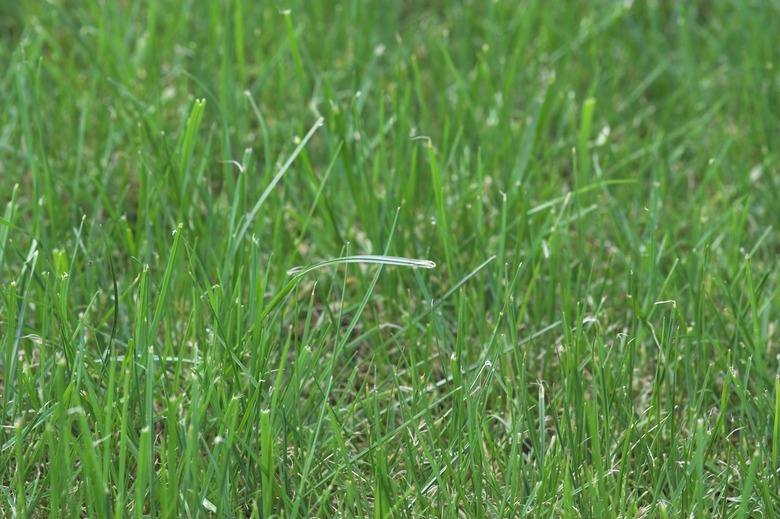Ryegrasses Vs. Fescue
Cool-season grasses like ryegrass (Lolium spp.) and fescues (Festuca spp.) fare best in northern climates, where springs and autumns are relatively cool. The species' varying growth habits and maintenance requirements, however, give them very different strengths as turf grass choices.
Annual Ryegrass
Annual ryegrass (Lolium multiflorum) is commonly used to overseed warm-season turf grasses in warm climates. The ryegrass remains green through the winter while the warm-season grass is dormant and yellow, and then the ryegrass dies in the spring as the warm-season grasses come out of dormancy.
Annual ryegrass is a coarse grass with shiny, medium-green leaves. It is not tolerant of drought, shade, heat, cold or wear, making it a poor choice as a primary turf species. It should be mowed to a height of 1.5 to 2 inches; mow it more closely in the spring to encourage the re-establishment of the warm-season turf.
Perennial Ryegrass
Perennial ryegrass (Lolium perenne) is also commonly used for overseeding in warm climates. It is winter hardy in U.S. Department of Agriculture zones 5 to 7, so it may be used as a permanent turf grass in those zones; in warmer climates, it will likely die as the weather warms in the spring.
Perennial ryegrass has a medium texture and a bright green color. It grows quickly and germinates early, and it is often included in turf seed mixtures. Its growth habit, however, may cause it to compete unfavorably with other species, so it shouldn't comprise more than 20 percent of any mixture.
Tall Fescue
Tall fescue (Festuca arundinacea), like ryegrass, has a coarse texture, but its color is typically darker than that of ryegrass. Tall fescue is hardy in USDA zones 2 to 7, and it is a common choice for general purpose lawn turf in those zones.
Tall fescue is a sturdy grass, with a high tolerance for drought, heat and wear. It doesn't handle cold as well, however, and in very cold climates, it may be prone to thinning. It may grow thin in shady areas, and mowing it to a height of less than 1.5 inches can also lead to thinning.
Fine Fescues
As their name suggests, fine fescues (Festuca spp.) produce a finer-textured turf than tall fescue or ryegrass. Like tall fescue, they are hardy in USDA zones 2 to 7. Fine fescues are tolerant of drought and shade, but they are not very tolerant of heat or wear.
Fine fescues are notable for their low maintenance requirements. Their need for fertilization and watering is modest, and they do not require frequent mowing. Fine fescue species such as hard fescue (Festuca longifolia) and red fescue (Festuca rubra), in fact, do well if they're left unmowed, and if they are mowed, they should be kept at a height between 1.5 and 2.5 inches.
